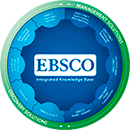Технические науки
Wise home non-touch control. Brain-computer interface and fuzzy voice input as an advanced voice input handler / Бессенсорный Умный дом. BCI и нечеткие голосовые команды как эффективный способ управления голосом
- Информация о материале
- Категория: 05.00.00 Технические науки
- Опубликовано: 08 июня 2016
Зуев Егор Дмитриевич / Zuev Egor Dmitrievich – студент, кафедра информационных и телекоммуникационных технологий, Московский авиационный институт (национальный исследовательский университет) г. Москва
Abstract: this paper outlines the way in which human can interact with wise things. It looks at different approaches of implementing the partial integration of human brain with smart playground; the ways of processing the voice input; fuzzy logic in text analyzing and non-strict commands input; what methods could be used to achieve full non-touch control.
Аннотация: в данной статье рассматривается возможность управления умными вещами через оператора. Здесь будут рассмотрены различные методы и подходы к частичной интеграции мозга оператора с умной площадкой; методы обработки голосовой информации; ленивые вычисления в анализе текста и нечетких голосовых команд; какие подходы позволят достичь полного бессенсорного контроля.
Keywords: levenshtein distance, Naïve Bayes, Wise home, automatization, voice input, phoneme – grapheme, EEG, neurosky, brain waves, neurology, R language, fuzzy logic, machine learning, wise things, classification.
Ключевые слова: дистанция Левенштейна, наивный Байес, умный дом, автоматизация, голосовой ввод, фонема-графема, ЭЭГ, нейроскай, мозговые волны, нейрология, язык R, ленивые вычисления, машинное обучение, умные вещи, классификация.
References
- Hwang M-Y: Subphonetic Acoustic Modeling for Speaker-Independent Continuous
- Speech Recognition. Ph.D. thesis, Carnegie Mellon University, 1993.
- Hieronymusreport, Bell Labs, 1993.
- Clarkson P., and Rosenfeld R.: Statistical Language Modeling Using the CMUCambridge Toolkit. In the proceedings of Eurospeech, Rodhes, Greece, 1997, 2707 – 2710.
- Abu-Mostafa Y. S. (1990). Learning from hints in neural networks, J. Complexity 6, 192–198.
- Akaike H.
- Angel J. R. P., Wizinowich P., M. Lloyd-Hart, and D. Sandler
- Baum E. B.
- Bayes T. (1763). An essay towards solving a problem in the doctrine of chances, Philos.Trans. R. Soc. London 53, 370–418, reprinted in Biometrika (1958) 45, 293–315.
- Haykin S. Neural networks: A comprehensive foundation. Prentice-Hall Inc., New Jersey, 1999. 97, 98
- Hermansky H. and Malayath N. Speaker verification using speaker-specific mappings. In Speaker Recognition and its Commercial and Forensic Applications, France, 1998. 72
- Huang X. D., Acero A, and Hon H-W. Spoken Language Processing: A Guide to Theory, Algorithm and System Development. Prentice Hall, 2001. 1
- Hunt and. Black A. W. Unit selection in a concatenative speech synthesis system using a large speech database. Proceedings of ICASSP-96, 1:373–376, 1996. 5
- Ikbal M. S., Misra H. and Yegnanarayana B. Analysis of autoassociative mapping neural networks. In IEEE Proceedings of the International Joint Conference on Neural Networks, Washington, USA, 1999. 70 Angell R. C., Freund G. E. and Willett P. 1983. Automatic spelling correction using a trigram similarity measure. Inf. Process. Manage. 19,255 261.
- Atwell E., and Elliott S.
- Schimke S., Vielhauer C., Dittmann J. Using Adapted Levenshtein Distance for On-Line Signature Authentication. Proceedings of the Pattern Recognition, 17th International Conference on (ICPR'04), 2004.
Поделитесь данной статьей, повысьте свой научный статус в социальных сетях
| Tweet |













